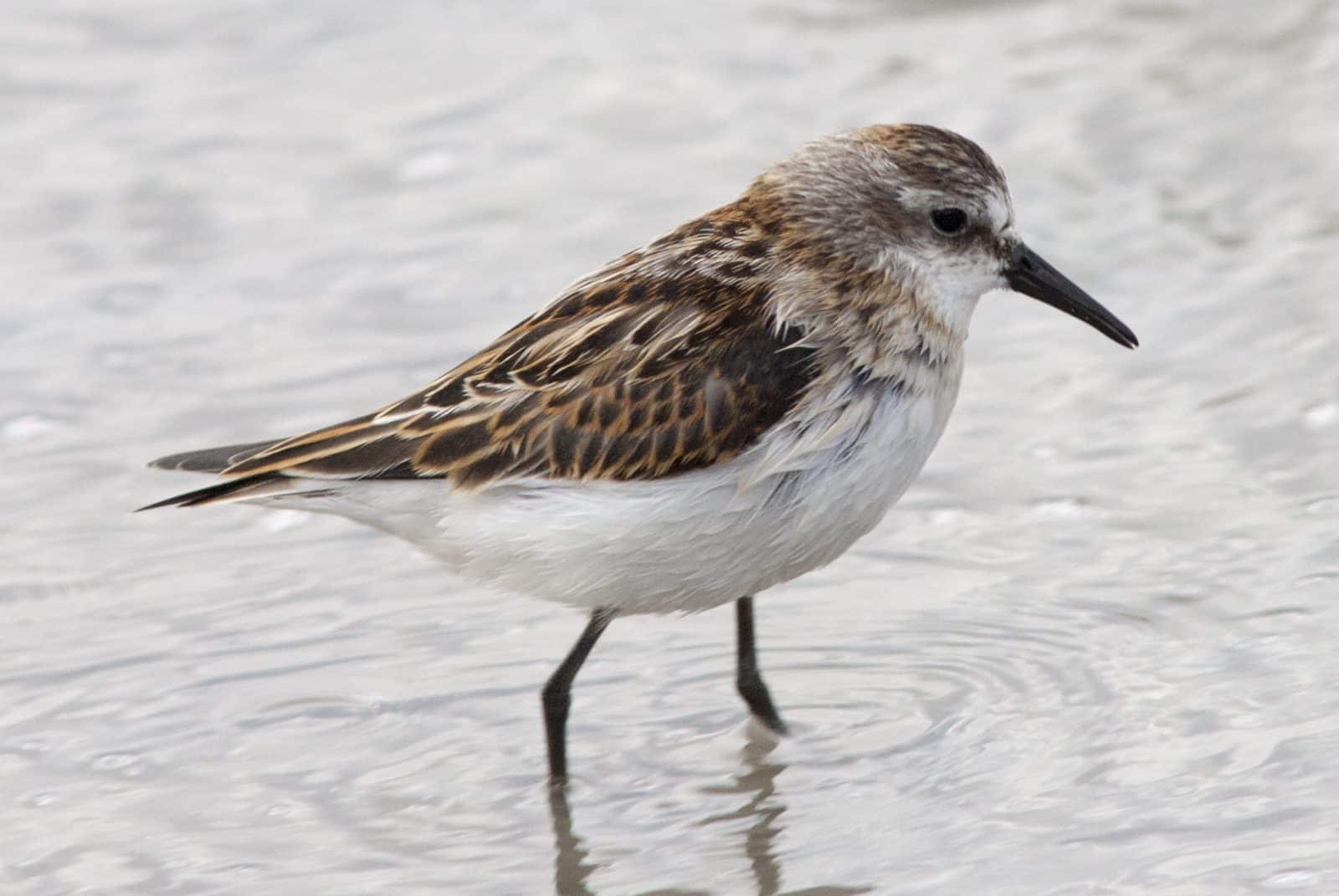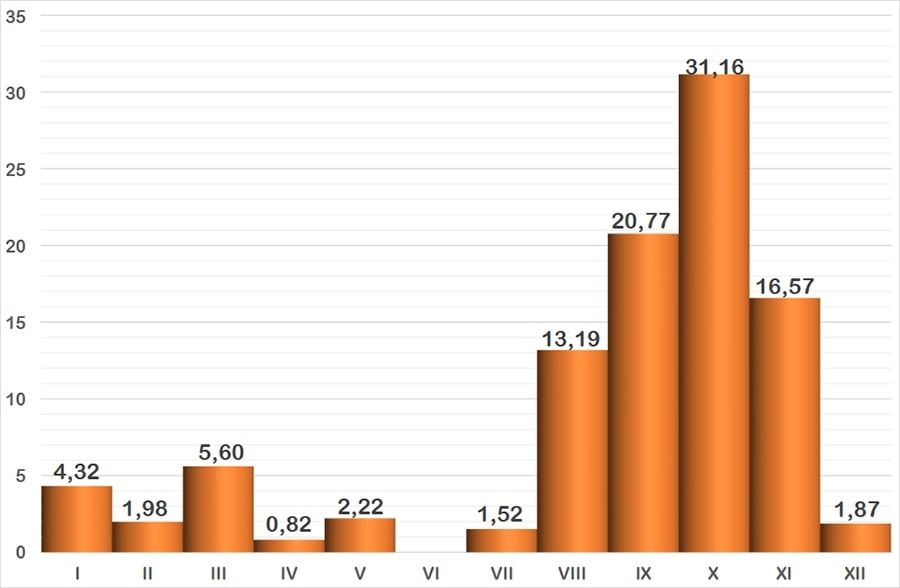It is the smallest among the sandpipers, it may look like a small Dunlin, but its bill is proportionally smaller and sharper (reminiscent of the shape of a small stake), its legs are black, which distinguishes it from the rare Temminck’s Sandpiper (whose legs are yellow). In summer plumage, the little stint has a dark brown to black mottling on the back and breast with feather edging and a reddish-brown background and with two distinctive light-coloured “V” patterns on its back, head, in the area known as the pileus, the dark stripes on the plumage give it the impression of having a small crest. In winter, the mottled plumage turns into a greyish checkerboard.

Species 1
Little Stint
Scientific name
Family 2
Taxonomic Affinity Group 3
Phenology 4
This small bird is a great migrant, making long journeys between its breeding grounds in the Scandinavian tundra or northern Siberia to more tropical and temperate regions. It hardly ever stays in the winter but during the particularly long postnuptial migration it is particularly abundant, almost four months and a very intense moment in October, when almost a third of the annual sightings are recorded.

The graph represents the probability of seeing a species during the year, grouped into months. The vertical axis indicates the percentage value. Each of the bars expresses its value. The horizontal axis represents the months: I = January, II = February, III = March, IV = April, V = May, VI = June, VII = July, VIII = August, IX = September, X = October, XI = November and XII = December.
Observation recommendations
Its great activity as it feeds on the edges of seasonally flooded areas makes it easy to spot in those locations.
Observation areas where we can find it
Notes
[1] The names used are from the list of birds of Spain, drawn up by SEO/BirdLife and updated to 2019 (https://seo.org/listaavesdeespana/). The reference is: Rouco, M., Copete, J. L., De Juana, E., Gil-Velasco, M., Lorenzo, J. A., Martín, M., Milá, B., Molina, B. & Santos, D. M. 2019. Checklist of the birds of Spain. 2019 edition. SEO/BirdLife. Madrid.
[2] The taxonomic family to which it belongs is indicated.
[3] Traditionally, waterbirds have been grouped according to their taxonomy or “taxonomic affinity”, i.e., when some birds coincide in certain features that allow them to be classified scientifically, but without leaving the rigour of science, they are put together in these groups so that they can be easily recognised. These groups are the following: Greves (belonging to the Podicipedae family), Herons and Similar (includes the families: Ardeidae -Herons- Ciconiidae -Storks- and Threskiornithidae -Ibises and spoonbills-), Ducks (the whole Anatidae family), Coots and Similar (the family Rallidae corresponding to Rails, Gallinules and Coots), Cranes (also with only one family, the Gruidae), Waders , a heterogeneous group, the most diverse of this classification, includes the families Burhinidae (Stone-curlews), Haematopodidae (Oystercather), Recurvirostridade (Avocets and Stilts), Glareolidae (Pranticole), Charadriidadea (Plovers), Scolapacidae and finally Gulls and Similar (the recently unified family Laridae, i.e. Gulls and Terns).
[4] Phenology studies the relationship between the cycles of living beings and meteorological factors, and in our latitude these factors manifest themselves as variations throughout the year, thus relating the seasons to the birds’ cycles (breeding, migratory journeys, etc.) The graph shows the probability of seeing a bird depending on the month. It uses data from 48 bird censuses carried out between October 2016 and September 2018. The method used is that of a census route with sampling stations, with a total count on the sheet of water.
